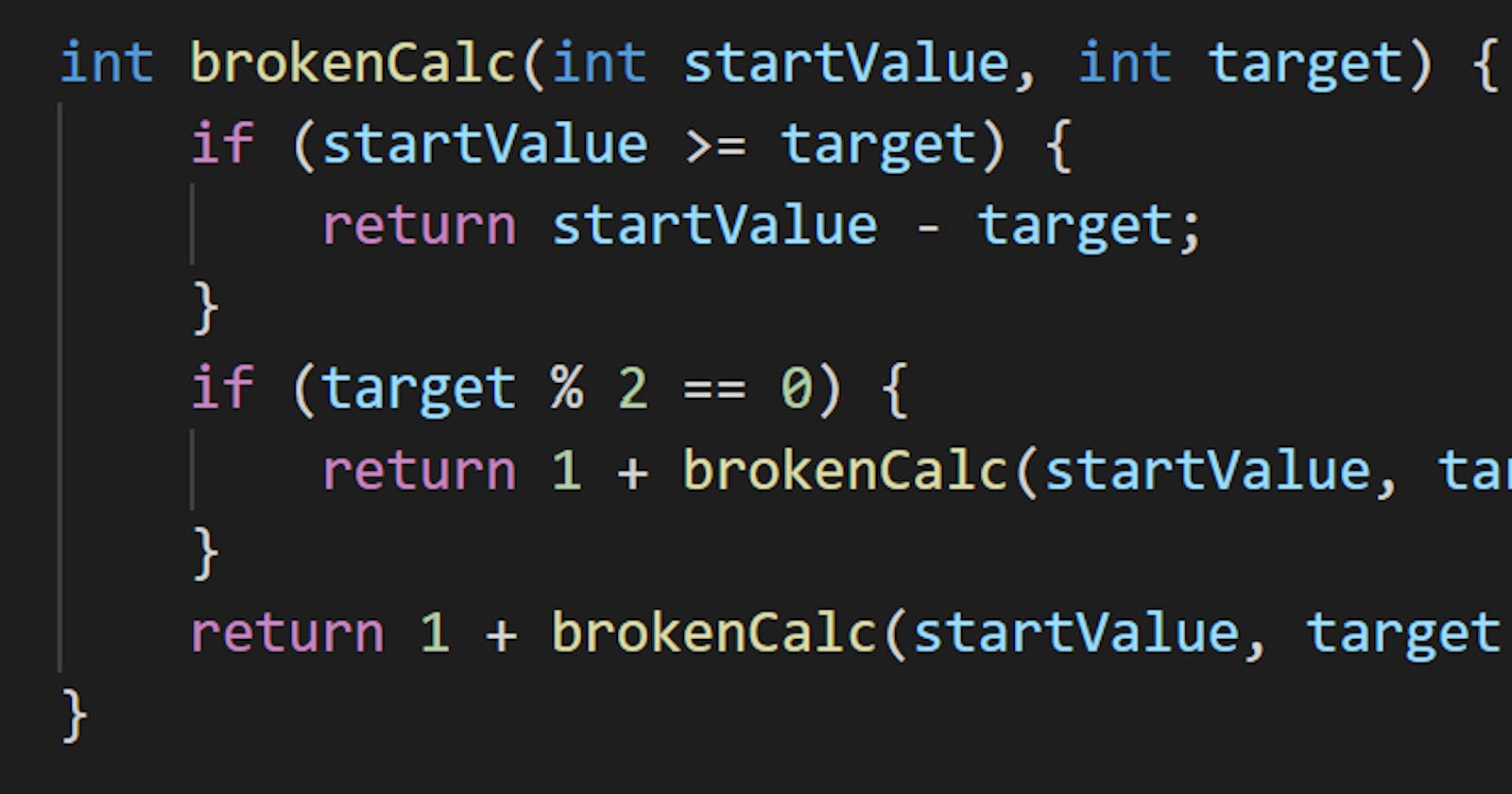Problem statement
There is a broken calculator that has the integer startValue on its display initially. In one operation, you can only either:
- multiply the number on display by
2, or - subtract
1from the number on display.
Given two integers startValue and target, return the minimum number of operations needed to display target on the calculator.
Example 1
Input: startValue = 2, target = 3
Output: 2
Explanation: Use double operation and then decrement operation {2 -> 4 -> 3}.
Example 2
Input: startValue = 5, target = 8
Output: 2
Explanation: Use decrement and then double {5 -> 4 -> 8}.
Example 3
Input: startValue = 3, target = 10
Output: 3
Explanation: Use double, decrement and double {3 -> 6 -> 5 -> 10}.
Constraints
1 <= x, y <= 10^9.
Solution: Recursive from target
It is no doubt that if startValue >= target, you have to go for subtraction exact startValue - target times.
Let us consider only the case startValue < target like the Examples above.
The optimal result of the Examples are:
- Example 1:
{2 -> 4 -> 3}. - Example 2:
{5 -> 4 -> 8}. - Example 3:
{3 -> 6 -> 5 -> 10}.
What is the pattern?
It is hard to see what is the pattern if you read the chains from left to right. Why 2 -> 4 in Example 1, but 5 -> 4 in Example 2? Too smart!
What if you read it from right to left?
Here is the pattern:
- If
targetis even, its previous value is its half (Example 2, 3). - If
targetis odd, its previous value is incremental by one (Example 1).
So you can go backward starting from the target instead of starting from the startValue.
Code
#include <iostream>
int brokenCalc(int startValue, int target) {
if (startValue >= target) {
return startValue - target;
}
if (target % 2 == 0) {
return 1 + brokenCalc(startValue, target/2);
}
return 1 + brokenCalc(startValue, target + 1);
}
int main() {
std::cout << brokenCalc(2,3) << std::endl;
std::cout << brokenCalc(3,10) << std::endl;
std::cout << brokenCalc(5,8) << std::endl;
std::cout << brokenCalc(1024,1) << std::endl;
std::cout << brokenCalc(1,1000000000) << std::endl;
}
Output:
2
3
2
1023
39
Complexity
- Runtime:
O(logN), whereN = target. - Extra space:
O(1).
